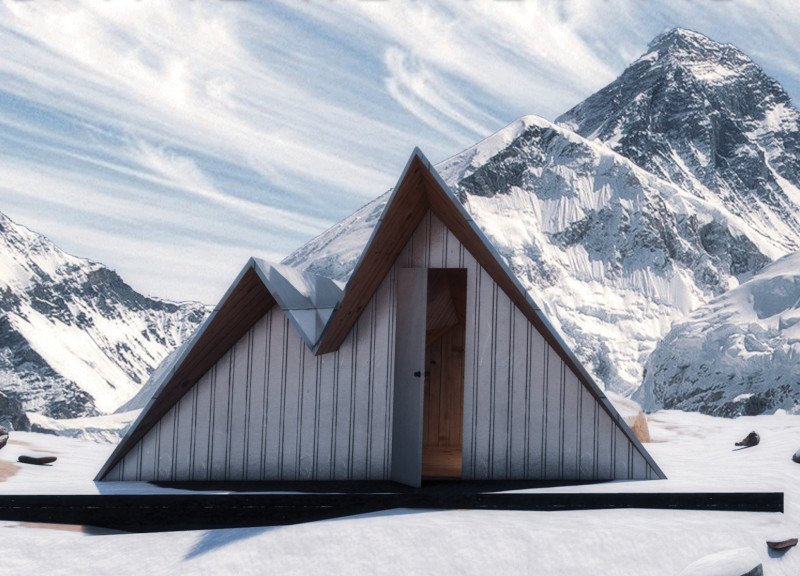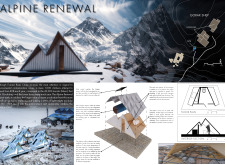5 key facts about this project
The Alpine Renewal project addresses environmental challenges in the Everest Base Camp region, particularly in Gorakshep. Each year, this area sees around 40,000 tourists. The project aims to create lightweight, modular facilities that provide essential services while managing waste effectively. Designed to blend with the natural landscape, the project emphasizes sustainability and ecological awareness in a region marked by its delicate environment.
Sustainability Integration
At the core of the design is a biogas reactor system that processes human waste from the facilities. Solar panels deliver the energy needed to run the reactor, heating it for optimal performance. The system also generates electricity for lighting in the units. By using renewable energy, the initiative aims to reduce its environmental footprint and support the needs of visitors.
Material Selection
The exterior and roof of the buildings are made from a titanium zinc alloy. This material is light yet strong, ideal for the tough conditions found in the mountains. The choice of this alloy not only provides durability but also helps the structures blend better with the surroundings, thanks to its matte finish. This consideration for aesthetics and function plays a key role in the project's design philosophy.
Interior Composition
Inside the facilities, bamboo is the primary material used. Bamboo is chosen for its sustainability and local availability, reflecting the project's commitment to using resources that are environmentally friendly. The design includes insulation between the exterior cladding, which helps maintain a stable temperature within the units. This feature is particularly important given the harsh weather conditions often faced in the region.
Foundation Design
Constructed on a gabion wall foundation, the buildings rely on locally sourced rocks. This method simplifies the building process and minimizes the need to transport heavy materials to remote locations. The gabion system provides a strong and adaptable base that can respond to different terrain. With bamboo walls fitting neatly into this structure, the design ensures stability while respecting the environment.
Overall, the project represents a thoughtful approach to balancing human activity and environmental preservation. It incorporates practical solutions that address real challenges faced in high-altitude landscapes, fostering a responsible dialogue between architecture and nature.


















































